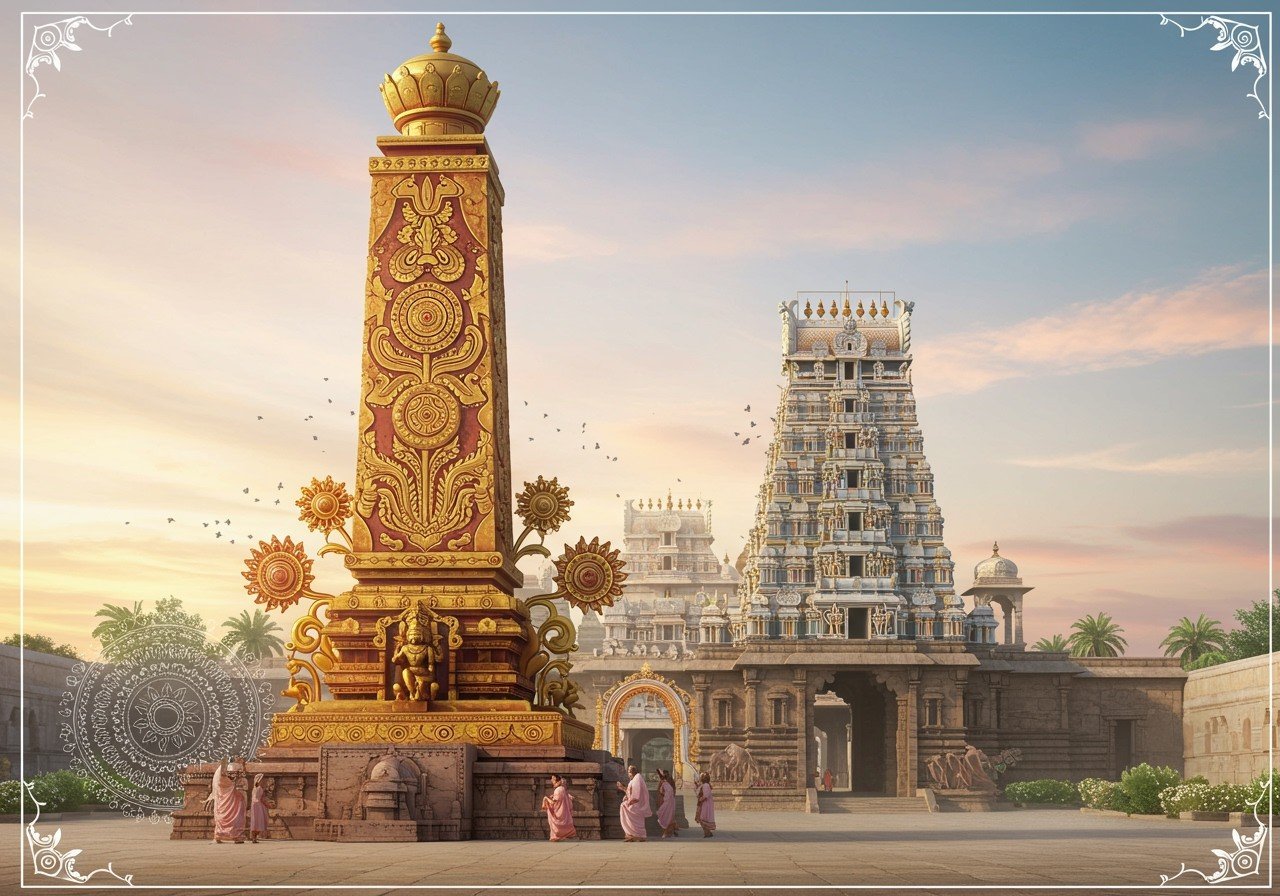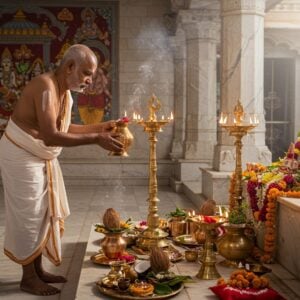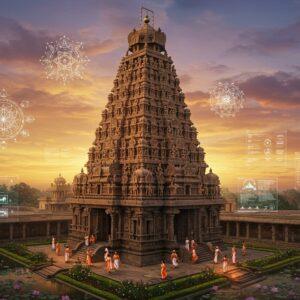
Dwajasthambams, also known as Kodimarams, hold a revered position in Hindu temples, especially across South India and Sri Lanka. More than just ornate flagpoles, they embody deep spiritual significance, acting as a vibrant link between the heavens and the earth. Let’s delve into the rich symbolism and cultural importance of these magnificent structures.
Unveiling the Symbolism
Imagine a towering pillar, reaching towards the sky, firmly rooted in the earth – the Dwajasthambam represents this divine connection. It symbolizes righteousness, good reputation, and proper conduct. Often seen as a representation of the Trimurtis (Brahma, Vishnu, and Shiva), the Dwajasthambam is a conduit between the human and the divine. It’s a powerful symbol of the human spine, signifying our ability to stand tall, reflecting strength and resilience. Sometimes adorned with 32 rings, mirroring the 32 vertebrae of the spinal cord, it embodies hope and the pursuit of enlightenment, rising above ignorance.
Construction and Features: A Blend of Artistry and Spirituality
Traditionally crafted from a single tree trunk or sculpted from stone, Dwajasthambams often feature embellishments of brass, copper, gold, or Panchaloha (a five-metal alloy). The top typically has three horizontal perches directed towards the sanctum sanctorum, symbolizing the holy trinity. The base of the Dwajasthambam holds immense significance, grounding the structure’s spiritual power.
Ritualistic Importance: The Heart of Temple Festivities
During temple festivals, the Dwajasthambam takes center stage. The Dwajarohanam, the flag hoisting ceremony, marks the commencement of festivities, inviting the deities to partake in the celebrations. The flag itself often depicts the deity’s vahana (vehicle) – Nandi for Shiva, Garuda for Vishnu, Mayura for Murugan, and Mooshika for Ganesha. Other sacred symbols like the sun, moon, trident, and shank might also be featured, enriching the spiritual narrative. In temples adhering to the Agamas (ancient scriptures governing temple construction and rituals), the Dwajasthambam is indispensable. Utsavas (temple festivals) are rarely conducted without it. Devotees traditionally offer prayers to the Dwajasthambam before entering the inner sanctum, acknowledging its sacred presence. During Pradakshina (circumambulation), the Dwajasthambam area is included, signifying its integral role in temple worship. In temples following Shodasopachara puja (16 forms of worship), many of these are offered to the Dwajasthambam alongside the main deity.
Other Functions: A Conduit of Divine Energy
Beyond its symbolic and ritualistic roles, the Dwajasthambam is believed to channel divine energy into the temple. Some believe it acts as an antenna, drawing cosmic energy into the sacred space. The hoisted flag is seen as a protective shield against negative forces, safeguarding the temple and its surroundings.
Dwajasthambams in Famous Temples
Many renowned temples across India showcase magnificent Dwajasthambams, each with unique characteristics. Their presence enriches the spiritual atmosphere and serves as a testament to the temple’s history and devotion.
-
Sabarimala Dwajasthambam
The Dwajasthambam at the Sabarimala Ayyappan Temple stands as a beacon of faith for countless devotees. Its gold plating adds to the spiritual aura, making it a prominent feature during the Makara Jyothi festival.
Learn more about temple architecture and symbolism in this insightful blog post.
-
Tirumala Dwajasthambam
The towering Dwajasthambam at the Tirumala Venkateswara Temple in Andhra Pradesh is known for its grandeur and intricate craftsmanship. It plays a central role during the Brahmotsavam festival, adding to the spiritual vibrancy of the celebrations.
Discover the spiritual heart of Maharashtra and its famous temples, including Siddhivinayak and Titwala, in this captivating article.
-
Srirangam Dwajasthambam
At the Srirangam Ranganathaswamy Temple, one of the largest functioning Hindu temples globally, the Dwajasthambam holds both historical and religious significance. Its artistic engravings depicting deities and mythological scenes add to its allure, serving as a visual guide for devotees.
Explore the history and significance of the Sthaneshwar Mahadev Temple with this informative guide.
Poojn.in: Your Companion on a Spiritual Journey
At poojn.in, we understand the deep-rooted significance of these traditions. We offer a curated collection of authentic puja items, spiritual guides, and traditional attire to enhance your temple visits and spiritual practices.
-
Ritual Kits
Our thoughtfully assembled puja thali sets provide everything you need for a reverent experience during temple rituals. Prepare for your visit to temples with a Dwajasthambam with all the essential items conveniently packaged.
-
Spiritual Guides
Delve deeper into the significance of Dwajasthambams with our collection of informative books. Enhance your understanding of their role in Hindu temples and enrich your spiritual journey. Lord Balaji Charan Paduka is a perfect addition to your pooja room or car dashboard, invoking blessings as you embark on your temple visits.
-
Traditional Attire
Dress respectfully for your temple visits with our selection of traditional clothing. Find appropriate attire that honors the sanctity of these spiritual spaces.
Embrace the divine with a Maa Tara Murti or an Ashta Dhatu Maa Lakshmi Murti from our collection, adding a touch of devotion to your home.
Connect with us: Call us at 03369029784 or WhatsApp us at 9476142738. Visit poojn.in to discover our complete range of products and services.
Conclusion: Timeless Pillars of Faith
Dwajasthambams remain timeless symbols of faith, deeply woven into the fabric of Hindu temples. They are more than just architectural marvels; they represent the spiritual aspirations of devotees, connecting them to the divine. Through their intricate symbolism, meticulous construction, and vital role in temple rituals, they embody the essence of our rich cultural heritage. As temples continue to serve as spiritual and cultural hubs, Dwajasthambams stand tall, guiding devotees on their spiritual journeys and preserving the sanctity of ancient traditions for generations to come.


